Orimattila 作者: 来源: 发布时间:2021-10-16
一、所属省或是州,具体位置,人口,面积
Orimattila is a town in the province of Päijänne-Häme in Finland. The population of the city of Orimattila amounts to approximately 16,221 inhabitants and the total area is 814.01 km². The population in the central town of Orimattila church village on December 31, 2014 was 9,171 inhabitants. Orimattila Municipality was founded in 1865, and was transformed into a city in 1992. Orimattila City Council and Artsjö City Council later accepted the merger between the two municipalities on March 22, 2010. The merger took effect at the turn of the year 2010/2011.
The city of Orimattila is part of Lahti's economic region. The local language is predominately Finnish at is 97.5%.
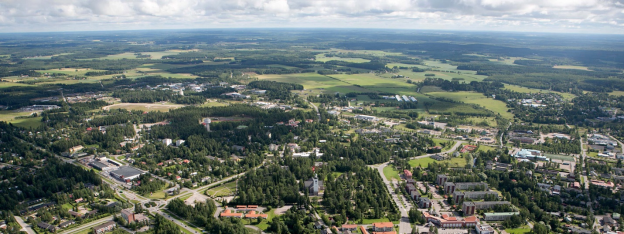
https://www.orimattila.fi/
二、自然地理
1.地理条件
The city borders Hollola municipality, Itis municipality, Kärkölä municipality, Lahti city, Lappträsk municipality, Mörskom municipality, Mäntsälä municipality and Pukkila municipality.
Orimattila's city center, also known as Orimattila's church village, forms Orimattila's municipal center, which houses the town hall and department stores. In the center is Orimattila Church Hill, which was defined as a nationally significant cultural and historical environment in 1993 and is also included in an updated version of the same inventory from 2009.
The old forest of Mallusjoki is an area of 21.8 hectares, located in Orimattila's Mallusjoki. It is a spruce forest growing on fresh and grove-like cloth. There are pines at the rock outcrops. The fields in the northern and central part of the area have been under cultivation, and the fields at the southern end are afforested with deciduous trees. There is an aged spruce forest in the area. There are also aspens in the middle of the spruces. There are also dying trees in the area due to its natural occurrence. The area is a state-owned heritage site and fully protected under the Nature Conservation Act. The area belongs to the boreal natural forests. There is a nature trail about four kilometers long in the forest, marked with yellow paw pictures.
https://fi.wikipedia.org/wiki/Orimattila
2.交通情况
All commuter Z trains stop in Henna. The train journey to Henna takes 53 minutes from Helsinki, 34 minutes from Tikkurila and 13 minutes from Lahti. The train stops at Henna station every hour.
https://www.visitorimattila.fi/fi-FI/topic/5ddfb6487acd9259488c1e5e
三、经济发展和规模
The textile industry has had a long tradition in Orimattila: wool dyeing began in the 19th century, and in the 1950s the Wool Factory employed about 600 people. In 1924–1986, Kaitila Oy and in 1945–2012 Virke Oy operated in the city. The metal company Orima has been operating in Orimattila for more than 60 years.
The companies that paid the most corporate tax in 2015 were Orimattilan Osuuspankki, the Allu group, which produces mining machinery, and the Kera Group, which manufactures construction products such as skylights
https://fi.wikipedia.org/wiki/Orimattila
四、产业特点/重点项目
The ten largest employers in the city are: Orimattila city, Päijät-Hämeen sosiaali- ja terveysyhtymä, Keraplast Oy, Hermetel Oy, Orima-Tuote Oy, Orfer Oy, Nesco Oy, Orimattila parish, Päijät-Hämeen koulutuskonserni, and Allu Finland Oy.
The oldest industrial activity in Orimattila has been the village mills. At the end of the 19th century, other hydropower industries began to emerge in the vicinity of the small rapids. A bone meal mill was created in Hönoskoski, Tönnö, and its operation was quite significant. Bone meal was transported all the way to St. Petersburg.
The rise of industry particularly affected the church village, but the Porvoonjoki River and the private Lahti-Loviisa railway, which was built in the early 20th century and divided the parish, also contributed to the creation of businesses - sawmills and mills. The actual timber industry was not born in the parish, but the Porvoonjoki river provided waterways until the 1950s. The growth of the business was accelerated by the Telephone Association founded by the merchant KJ Oxenius. In 1888, Uusi Suometar magazine was able to tell its readers the progressive news: "Orimattila and Helsinki are now connected by telephone line."
The most significant industrial plants in Orimattila have been textile factories. The first of them - Orimattila Villa Kehruu ja Kutomotehdas originated when the painter KH Attila in 1875 put a paint pot to boil on the bank of the Palojoki river and dyed everything that the villagers brought him to dye in a small sauna during the summer. Värjäri Attila's operations were the beginning of Orimattila's Wool Mill, which had a significant impact on Orimattila's development over the following decades. The factory was a good taxpayer and a life builder. A new kind of profession was born and changed for the keeper.
The heyday of the wool mill dates back to the 1950s, when the mill offered jobs to about 600 people from Orimatt. The operation of the wool factory in Orimattila ended with the bankruptcy of Villayhtymä Oy in 1970. Today, the property of the wool factory, which has dominated the downtown view of Orimattila for decades, continues its life as a versatile business and operating space in Kehräämö. The legacy of the textile industry is further carried forward by Finnkarelia Virke Oy, founded in 1945.
When talking about Orimattila, it is not worth forgetting the small-scale home industry, which is known outside Orimattila. As early as the 19th century, Orimattila's Heinämaa was known for its lace weavers and wooden dish makers. The origin of the art of plucking is not known, but lace has been plucked - or “stretched” like a hay in Finland - since the 18th century. Industrial products have supplanted hand-made lace, but the lacing skills and the hay-lace tradition are maintained by the Heinämaa Lace Kniters Association.
https://www.orimattila.fi/info/tietoa-orimattilasta/historia
五、风景名胜,景点( attractions)
1. Orimattila Museums
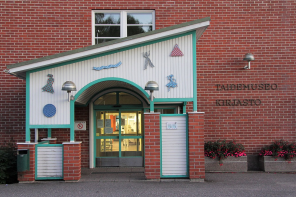
Orimattila Art Museum
The Orimattila Art Museum is located on the upper floor of the red-brick Orimattila Culture House in the same building as the City Library. The municipality's art collection was founded in 1978. The Orimattila Art Museum has been operating in its current premises since 1993. The museum has the collections of the Ilmari Art Foundation and Toini Wall-Hakala, with Marcus Collin, Albert Edelfelt, Akseli Gallen-Kallela, Pekka Halonen, Eero Järnefelt, Unto Koitinen, Aleksano, Berndt Lindholm, Helene Schjerfbeck, Maria Wiikin, Ferdinand von Wright, Works by Magnus von Wright, Wäinö Aaltonen, Walter Runeberg, Ville Vallgren. In addition, the museum has a collection of Pentti Papinaho with various works from 30 years.
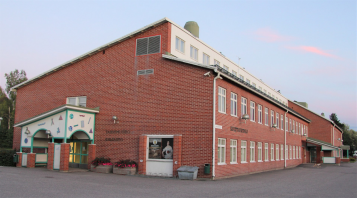
Orimatala Homeland Museum
The Orimattila Homeland Museum is located in Viljandi, in the city center of Orimattila. It is a member museum of the Finnish Association of Museums, which is visited by a museum card.
Artjärvi Homeland Museum
The local museum maintained by the Artjärvi Homeland Association is the oldest local history museum in Päijät-Häme. It originated from a donation made in 1923. The museum is open by appointment.
Orimattila bottle Museum
The Orimattila Bottle Museum is located in the center of Orimattila in Viljamaa, close to the Orimattila Homeland Museum and is open on Labor Day. The Orimattila Bottle Museum's collections include a variety of bottles from the 18th century to the mid-20th century, including soft drink bottles, liquor bottles, beer bottles and pharmacy bottles, for a total of 1,500 objects.
https://fi.wikipedia.org/wiki/Orimattila
2. Orimattila Church
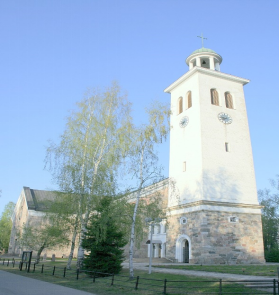
Orimattila church is a granite -built cruciform church, which was completed in 1866. Designed by Jean Wik. The Empire-style church was built between 1862 and 1866. The bell tower was completed in 1851 and was raised in 1932. The bell tower has four church bells, one of which is on the ground floor of the tower. The church is the fourth of the Orimattila Evangelical Lutheran Church.
The walls of the church were excavated from Niemenkylä. The church has three ships. The middle ship has a wooden barrel vault and the side ships have flat roofs. There have been flocks on the aisles, which had 1,700 seats in the church, but the flocks were demolished in 1932, when the church became 1,200. The church altarpiece Come to Me was painted in 1874 by Erik Johan Löfgren.
Orimattila church hill, which in addition to the Church belong to parish, parsonage, cemetery, parish magazine and clustered around the village Raitin residential and commercial buildings, is well preserved its 1900s the first half of the village look. The National Board of Antiquities has defined Orimattila Church Hill as one of Finland's nationally significant built cultural environments.
https://fi.wikipedia.org/wiki/Orimattilan_kirkko
3. Tönnönkoski bridge and mill site
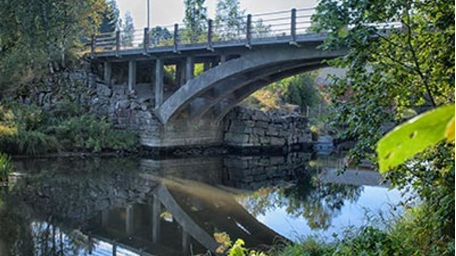
Tönnönkoski on the Porvoonjoki River, located south of the church village of Orimattila, reflects a long and diverse mill tradition. Finland's oldest concrete arch bridge is also connected to the mill environment.
To the south of the rapids is a concrete arch bridge built in Tönnö in the 1910s, which is now used for light traffic. The Tönnö concrete arch bridge is the museum bridge of the Road Museum. The alignment of the old road following the river and crossing the bridge partly follows the alignment of the road already in use in the 18th century.
The bridge is connected to the north by the rapids landscape with its mills. There are two mills on the edge of the rapids from the 19th century and the beginning of the 20th century. On the eastern shore of Tönnönkoski, there is a two-storey Tönnö school in a scenic location. The small-scale settlement in the area is mainly from the reconstruction period.
To the south of Tönnönkoski, the landscape opens up and there are cultivation openings on the riverside slopes. At the top of Peltorinte is the farm center of the former Sommarnäs manor. A birch alley leads to the courtyard of the main building in a scenic location.
The Tönnönkoski bridge and mill site belong to the nationally valuable Porvoonjokilaakso landscape area.
The Tönnö Bridge, connected to the old road and crossing the Porvoonjoki River, was built in 1911. The bridge was designed by the bridge construction professor Jalmar Castrén and contracted by the Tampere cement foundry. The bridge was Finland's first reinforced concrete bridge.
There has been a mill on the Porvoonjoki Tönnö rapids since 1586. In the 19th century, the rapids used three mills and a sawmill. Newer than the surviving mills is a turbine mill built in 1909. Tönnö School was completed in 1906.
In the village of Tönnö, southeast of Tönnönkoski, there were two houses in the 1560s.
Sommarnäs Manor, located on the western edge of the river valley, on the Niemenkylä side, was established as a new estate in 1782. The Empire-style main building was built by the Crown Convent FA Stjernvall in the 1830s and 1840s. The manor's power plant was built in Vääräkoski in 1911. The Sipilä and Kangas manors in Itäranta were established as equestrian facilities in the 17th century.
https://www.visitorimattila.fi/fi-FI/page/5df777be94ca832871fd34ce
六、历史文化
1.历史
The oldest known settlement in Finland has been found in Orimattila. The history of the parish of Orimattila dates back to the founding of the parish in 1636, when it was separated from the parish of Hollola.
Administratively, the parishes of Orimattila and Hollola were temporarily united during the Great War after the Great Northern War caused the Russian occupation of Finland. At that time, Pastor Anders Herkepaeus of Orimattila was ordered to collect taxes also from Hollola after Pastor Gustaf Berner escaped to Sweden in 1714. source?
In Finland, the parish administration was replaced by the municipal administration as the Grand Duke of Finland by decree in 1865. Before that, the independence of municipalities from parishes had been considered for years in the early 1860s. The municipality of Orimattila is a local government unit separated from the parish of Orimattila by a municipal decree of 1865. Continuation War lost Kirvusta inhabited a lot of migrant Karelians Orimattila.
The municipality of Orimattila introduced the name city in 1992. In 2009, Orimattila decided not to participate in the municipal association negotiations between the eight municipalities in Päijät-Häme , but to continue as an independent municipality. source? Orimattila City Council and Artjärvi Municipal Council unanimously approved the Orimattila and Artjärvi Municipal Association on March 22, 2010. The Association of Finnish Municipalities entered into force on 1 January 2011.
https://www.orimattila.fi/
2. 文化体育
The permanent exhibition of the Orimattila Art Museum features Ilmari and Toini Wall-Hakala Art Foundation's Finnish fine art from the early 19th century to the 1950s, Pentti Papinaho's sculpture collections and the Orimattila Erkot exhibition. In addition, the museum has changing exhibitions and events. Orimattila Orimattila operating theater friends managed Orimattila theater. Orimattila's theater friends, which act as an umbrella organization, take care of the running of Orimattila's Summer Theaters and other related ancillary activities.
Orimattila has five sites classified by the National Board of Antiquities as a nationally significant built cultural environment (rky): Orimattila church hill, Tönnönkoski bridge and mill site, Heinämaa village, Kinttula manor and Ratula manor. The mansions are privately owned and are not open to the public.
https://www.orimattila.fi/
七、其他信息
Orimattila's city center, also known as Orimattila's church village, forms Orimattila's municipal center, which houses the town hall and department stores. In the center is Orimattila Church Hill, which was defined as a nationally significant cultural and historical environment in 1993 and is also included in an updated version of the same inventory from 2009.
https://fi.wikipedia.org/wiki/Orimattila
八、联系方式
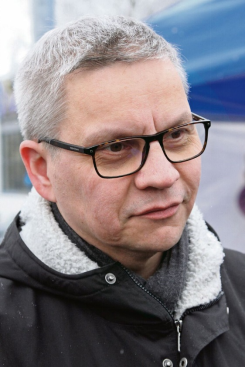
Mayor: Osmo Pieski
Telephone: 03 888 111
Email: orimattilan.kaupunki@orimattila.fi
https://www.orimattila.fi/
